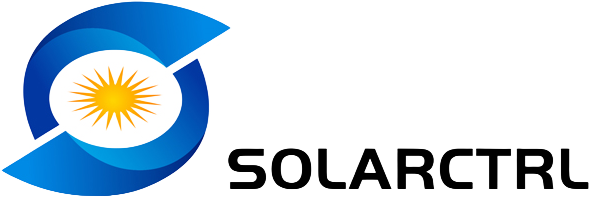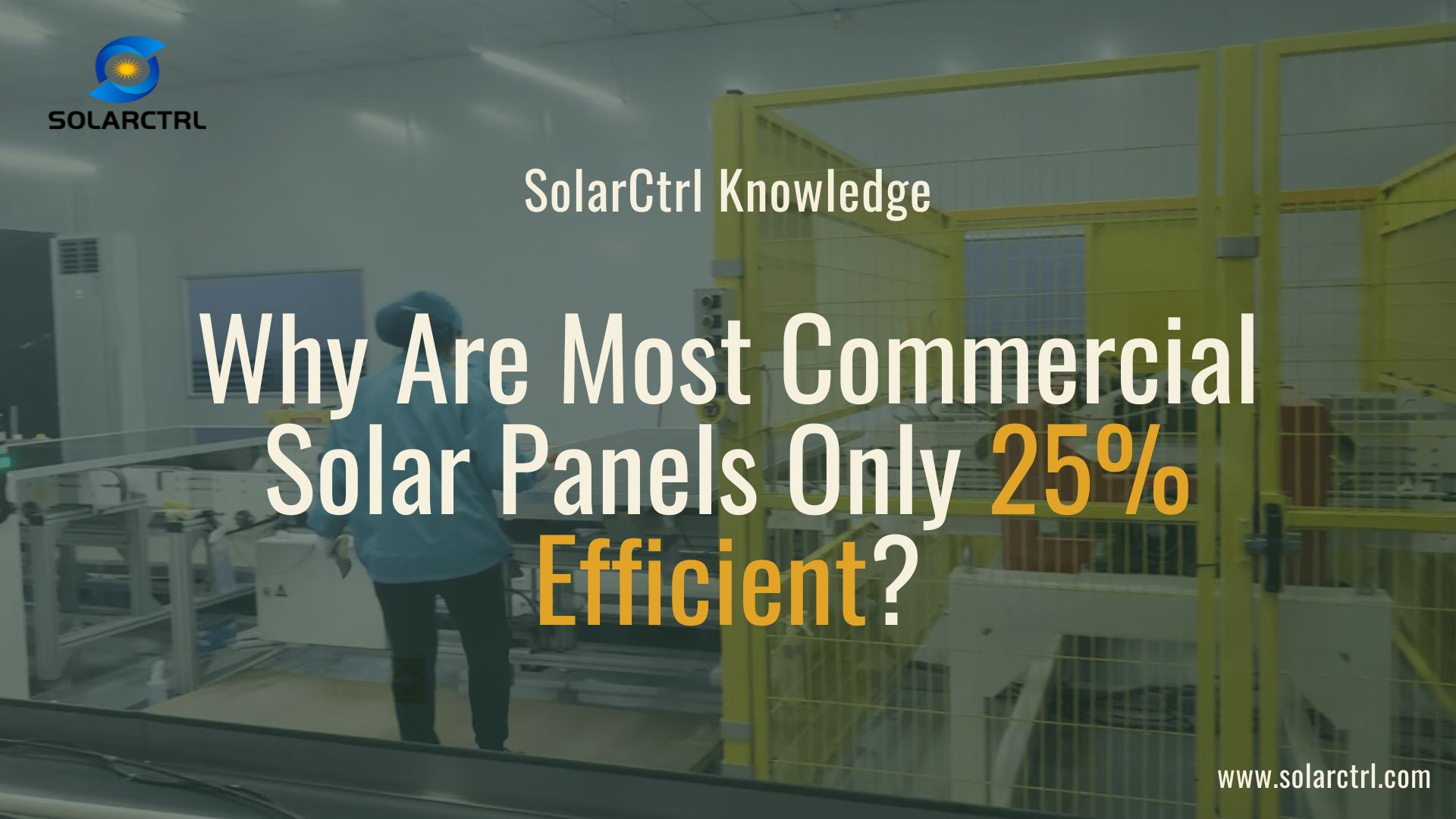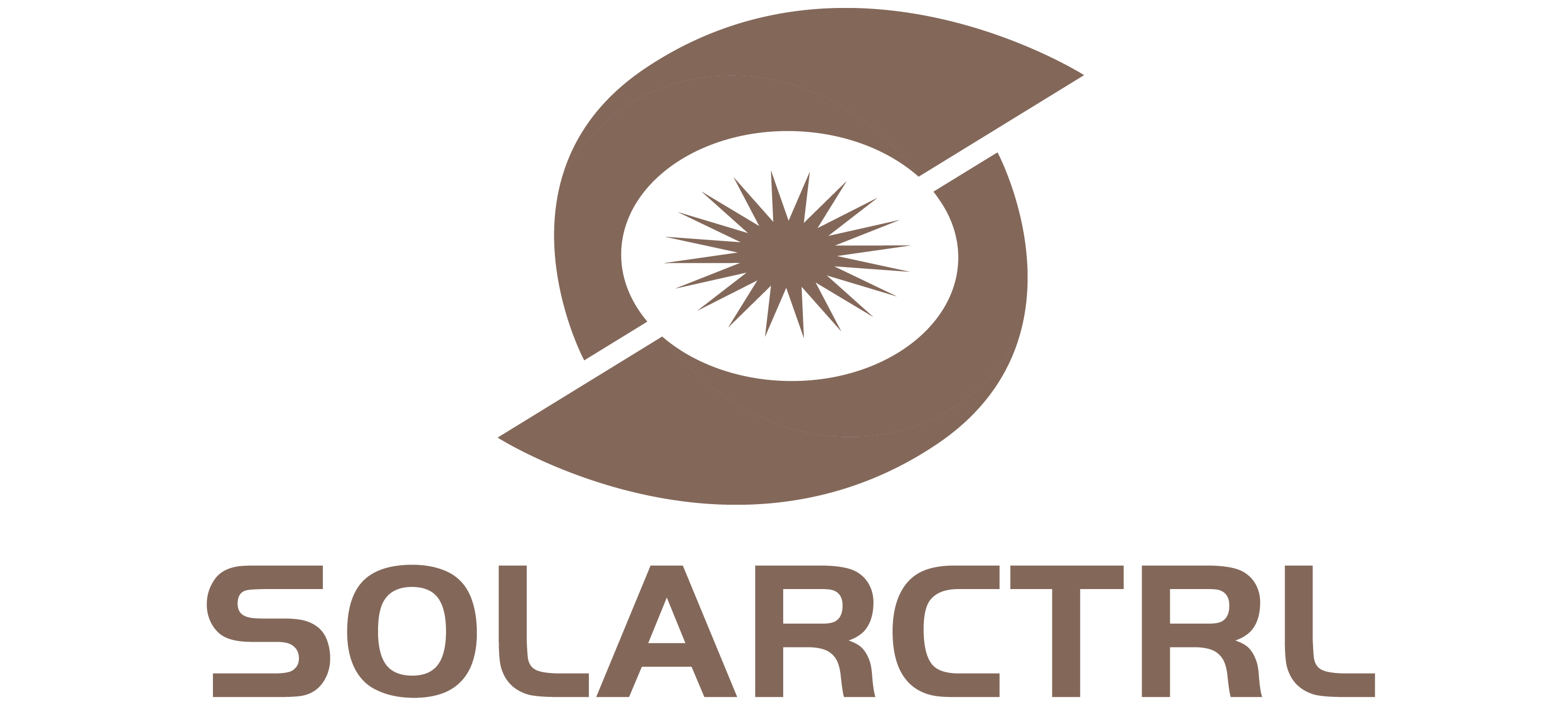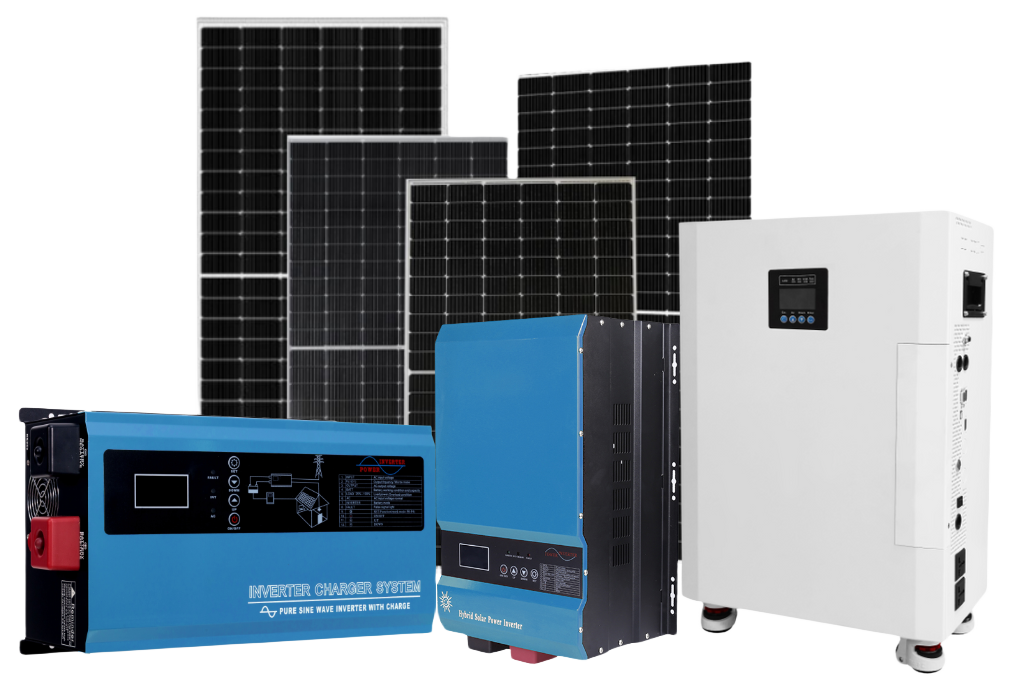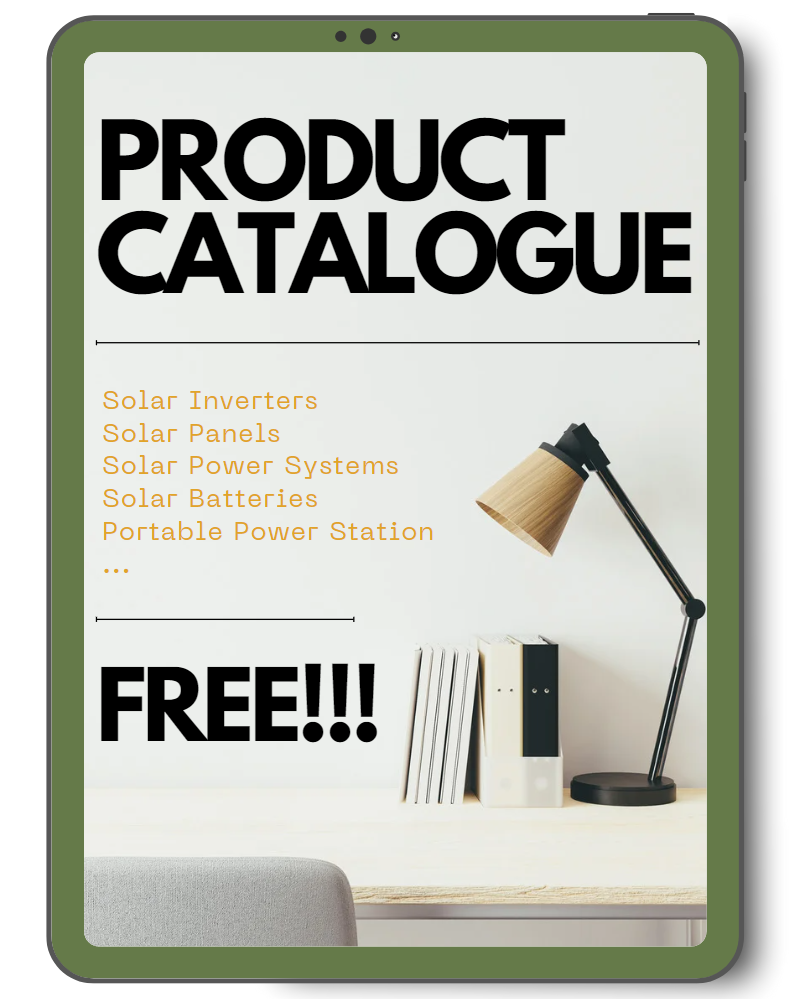All-In-One Solar Power System Manufacturer
Certified with CE, IEC, ROHS, ISO9001 certifications, with fast delivery, fexible MOQ and OEM services.
All-In-One Solar Power System Manufacturer
Certified with CE, IEC, ROHS, ISO9001 certifications, with fast delivery, fexible MOQ and OEM services.
The Best Choices for All-In-One Solar Power System
SolarCtrl All-In-One Solar Power System is built with an integrated MPPT or PWM solar controller and battery for seamless energy management, and it can adapt to different battery types. The system has added options for over-voltage and battery reverse connection protection, and under-voltage & over-temperature safeguards, which will ensure the system’s stability and security.

The Best Choices for All-In-One Solar Power System
SolarCtrl All-In-One Solar Power System is built with an integrated MPPT or PWM solar controller and battery for seamless energy management, and it can adapt to different battery types. The system has added options for over-voltage and battery reverse connection protection, and under-voltage & over-temperature safeguards, which will ensure the system’s stability and security.

Table Of Contents For This Page
To make sure you can find the information you want quickly,
we have prepared this content directory that will jump to the corresponding location when you click on it.
Table Of Contents For This Page
To make sure you can find the information you want quickly,
we have prepared this content directory that will jump to the corresponding location when you click on it.
General Hot Selling Products
Discover SolarCtrl’s High-Efficiency All-In-One Solar Power System , setting the gold standard for performance and reliability in renewable energy.
Hot Selling
Main Features
- Pure sine wave output. Rate power 300W-3KW
- Built-in MPPT or PWM solar controller & Battery
- Can choose different types of batteries
- High-low voltage protection
- Against overload, short-circuit protection
- Over voltage, battery reverse connection (optional)
- Under-voltage and over-temperature protection
- Selectable battery priority or utility priority
- Have UPS function and 15 AC charger
Application

| Rated Input Power | Input Frequency Range | AC Output Voltage Range | Inverter Output Voltage | Inverter Output Frequency | Temperature Protection |
| 300W~3000W | 45-65HZ | AVR Output 110VAC/120VAC/220VAC/230VAC±10% | 110VAC/120VAC/220VAC/230VAC±2% | 50/60HZ±10% | ≥85℃ Alarm, ≥90℃ Machine Shut Off |
General Hot Selling Products
Discover SolarCtrl’s High-Efficiency All-In-One Solar Power System , setting the gold standard for performance and reliability in renewable energy.


Main Features
- Pure sine wave output. Rate power 300W-3KW
- Built-in MPPT or PWM solar controller & Battery
- Can choose different types of batteries
- High-low voltage protection
- Against overload, short-circuit protection
- Over voltage, battery reverse connection (optional)
- Under-voltage and over-temperature protection
- Selectable battery priority or utility priority
- Have UPS function and 15 AC charger
Application

About SolarCtrl
SolarCtrl is a All-In-One Solar System Manufacturer in China.
We offer Grid Tie Solar Power System, Hybrid Solar Power System, Off Grid Solar Power System, and so on.
No matter if you are looking for a wholesale supplier or if you need custom-made all-in-one solar power system, we can all help.
Send an inquiry to get an instant quote now, Let’s raise your business to the next level !
About SolarCtrl
SolarCtrl is a All-In-One Solar System Manufacturer in China.
We offer Grid Tie Solar Power System, Hybrid Solar Power System, Off Grid Solar Power System, and so on.
No matter if you are looking for a wholesale supplier or if you need custom-made all-in-one solar power system, we can all help.
Send an inquiry to get an instant quote now, Let’s raise your business to the next level !
A Brief Self-Nomination, Why Choose SolarCtrl ?
Founded in 2009, SolarCtrl is a professional large-scale manufacturer and supplier in all-in-one solar power system industry integrating R&D and production together.
Source Directly from SolarCtrl’s Factory Lines—where cutting-edge technology meets cost-effective solutions for your business.
Strong Production Capacity
Experience uninterrupted solutions with our strong production capacity, ensuring timely delivery and consistent quality tailored to your needs.
Top Quality With Affordable Price
Strike the perfect balance between quality and cost. With our high-quality yet cost-effective all-in-one solar power system, your business gains a competitive edge without breaking the bank.
Customization & OEM Support
Enjoy the freedom to choose from customizable service. Our all-in-one solar power systems are crafted to meet your specific requirements.
Flexible MOQ and Swift Delivery
Scale your operations seamlessly with our flexible minimum order quantities and quick delivery times.
Industry-Leading Certifications
Our all-in-one solar power systems come with top industry certifications, offering you and your clients the assurance of safety and quality.
Full Service & Support
From pre-sales consultations to after-sales technical support, we’ve got you covered every step of the way.
A Brief Self-Nomination, Why Choose SolarCtrl ?
Founded in 2009, SolarCtrl is a professional large-scale manufacturer and supplier in all-in-one solar power system industry integrating R&D and production together.
Source Directly from SolarCtrl’s Factory Lines—where cutting-edge technology meets cost-effective solutions for your business.
Strong Production Capacity
Experience uninterrupted solutions with our strong production capacity, ensuring timely delivery and consistent quality tailored to your needs.
Top Quality With Affordable Price
Strike the perfect balance between quality and cost. With our high-quality yet cost-effective all-in-one solar power system, your business gains a competitive edge without breaking the bank.
Customization & OEM Support
Enjoy the freedom to choose from customizable service. Our all-in-one solar power systems are crafted to meet your specific requirements.
Flexible MOQ and Swift Delivery
Scale your operations seamlessly with our flexible minimum order quantities and quick delivery times.
Industry-Leading Certifications
Our all-in-one solar power systems come with top industry certifications, offering you and your clients the assurance of safety and quality.
Full Service & Support
From pre-sales consultations to after-sales technical support, we’ve got you covered every step of the way.
All-In-One Solar Power System: Component Breakdown
An all-in-one solar power system is an integrated solution that simplifies the complexities usually associated with solar installations. Despite being a single unit, it consists of multiple internal components that work in unison to capture, convert, store, and manage solar energy.
This article provides a breakdown of these key internal components and their respective roles.

Integrated Inverter
The integrated solar inverter is one of the most vital components. It is embedded within the system and takes the direct current (DC) generated by the PV cells and transforms it into usable alternating current (AC). The inverter ensures that the electrical energy produced is compatible with standard electrical grids and home appliances.
Battery Compartment
Many all-in-one systems come with built-in battery storage compartments. These compartments house the batteries that store surplus energy produced during the day. This stored energy can be used during non-sunny intervals, thus ensuring a constant power supply.
Microcontrollers
Microcontrollers within the all-in-one system help regulate various functionalities, from the rate of energy capture by the PV cells to the rate of energy discharge from the batteries. These microcontrollers ensure optimal system performance and contribute to the unit’s efficiency.
Cooling System
To ensure the system operates safely and efficiently, a built-in cooling system regulates the internal temperature. Overheating can reduce efficiency and damage components; therefore, a cooling system is vital for long-term reliability.


Interface and Display
A user interface and display panel are also built into the unit. This allows for easy monitoring and control of the system’s performance, enabling adjustments to be made when necessary, like switching between energy sources or checking battery levels.
Electrical Protections
Electrical protections like circuit breakers and surge protectors are integrated into the system to safeguard against electrical faults. These mechanisms prevent any potential damage to the components or risks to user safety.
Conclusion
A comprehensive understanding of the internal components of an all-in-one solar power system can demystify how these compact units operate so efficiently. By appreciating the roles and functions of each part, users can better manage and maintain their systems, ensuring they extract maximum value from their investment.
All-In-One Solar Power System: Component Breakdown
An all-in-one solar power system is an integrated solution that simplifies the complexities usually associated with solar installations. Despite being a single unit, it consists of multiple internal components that work in unison to capture, convert, store, and manage solar energy.
This article provides a breakdown of these key internal components and their respective roles.

Integrated Inverter
The integrated solar inverter is one of the most vital components. It is embedded within the system and takes the direct current (DC) generated by the PV cells and transforms it into usable alternating current (AC). The inverter ensures that the electrical energy produced is compatible with standard electrical grids and home appliances.
Battery Compartment
Many all-in-one systems come with built-in battery storage compartments. These compartments house the batteries that store surplus energy produced during the day. This stored energy can be used during non-sunny intervals, thus ensuring a constant power supply.

Microcontrollers
Microcontrollers within the all-in-one system help regulate various functionalities, from the rate of energy capture by the PV cells to the rate of energy discharge from the batteries. These microcontrollers ensure optimal system performance and contribute to the unit’s efficiency.
Cooling System
To ensure the system operates safely and efficiently, a built-in cooling system regulates the internal temperature. Overheating can reduce efficiency and damage components; therefore, a cooling system is vital for long-term reliability.

Interface and Display
A user interface and display panel are also built into the unit. This allows for easy monitoring and control of the system’s performance, enabling adjustments to be made when necessary, like switching between energy sources or checking battery levels.
Electrical Protections
Electrical protections like circuit breakers and surge protectors are integrated into the system to safeguard against electrical faults. These mechanisms prevent any potential damage to the components or risks to user safety.
Conclusion
A comprehensive understanding of the internal components of an all-in-one solar power system can demystify how these compact units operate so efficiently. By appreciating the roles and functions of each part, users can better manage and maintain their systems, ensuring they extract maximum value from their investment.
Maintenance and Troubleshooting Guide for All-In-One Solar Power Systems
Operating an all-in-one solar power system efficiently requires two pivotal strategies: proactive maintenance and effective troubleshooting. This guide separates these two aspects to provide a more focused and actionable set of recommendations.
Part I: Maintenance
Regular Cleaning
The photovoltaic cells’ surface should be regularly cleaned to remove accumulated dirt, dust, and debris, which can obstruct sunlight and reduce efficiency. Use non-abrasive materials and distilled water for this task.
Cooling System Check
Keep an eye on the cooling system’s filters and fans. Monthly inspections and cleanings will help ensure optimal thermal regulation and prevent overheating, thus preserving component longevity.
Battery Maintenance:
Conduct regular inspections to check for corrosion or damage in the built-in batteries. Maintaining the health of these batteries is crucial for ensuring a consistent power supply when sunlight is unavailable.
Inverter Inspections
Perform monthly visual checks and annual professional inspections on the integrated inverter. This critical component converts DC to AC, and its proper functioning is vital for the system’s overall performance.

Part II: Troubleshooting
Addressing Low Energy Output
If the system shows lower-than-expected energy output, start by checking the photovoltaic cells for obstruction and clean them. If the problem persists, inspect the inverter for any fault indicators.
Battery Drain Issues
For unexpectedly fast battery drainage, make sure all connected appliances are operating normally. If the issue remains, inspect the battery connections and consider a professional diagnostic test.
Inverter Failures
If the inverter displays an error or stops functioning, conduct a system reset as a preliminary troubleshooting measure. If the problem persists, consult your professional maintenance service.
Software Glitches
If experiencing irregular system behavior, ensure that the built-in microcontrollers have the latest firmware updates. Software glitches can often be resolved by simply updating the system’s internal software.
Conclusion
Both maintenance and troubleshooting are integral facets for the efficient and long-lasting operation of an all-in-one solar power system. At SolarCtrl , we not only provide state-of-the-art solar solutions but also invest heavily in after-sales support and technical guidance.
Contact us and get more information about the all-in-one solar power system now, let’s raise your business to the next level!

Maintenance and Troubleshooting Guide for All-In-One Solar Power Systems
Operating an all-in-one solar power system efficiently requires two pivotal strategies: proactive maintenance and effective troubleshooting. This guide separates these two aspects to provide a more focused and actionable set of recommendations.

Part I: Maintenance
Regular Cleaning
The photovoltaic cells’ surface should be regularly cleaned to remove accumulated dirt, dust, and debris, which can obstruct sunlight and reduce efficiency. Use non-abrasive materials and distilled water for this task.
Cooling System Check
Keep an eye on the cooling system’s filters and fans. Monthly inspections and cleanings will help ensure optimal thermal regulation and prevent overheating, thus preserving component longevity.

Battery Maintenance:
Conduct regular inspections to check for corrosion or damage in the built-in batteries. Maintaining the health of these batteries is crucial for ensuring a consistent power supply when sunlight is unavailable.
Inverter Inspections
Perform monthly visual checks and annual professional inspections on the integrated inverter. This critical component converts DC to AC, and its proper functioning is vital for the system’s overall performance.

Part II: Troubleshooting
Addressing Low Energy Output
If the system shows lower-than-expected energy output, start by checking the photovoltaic cells for obstruction and clean them. If the problem persists, inspect the inverter for any fault indicators.
Battery Drain Issues
For unexpectedly fast battery drainage, make sure all connected appliances are operating normally. If the issue remains, inspect the battery connections and consider a professional diagnostic test.
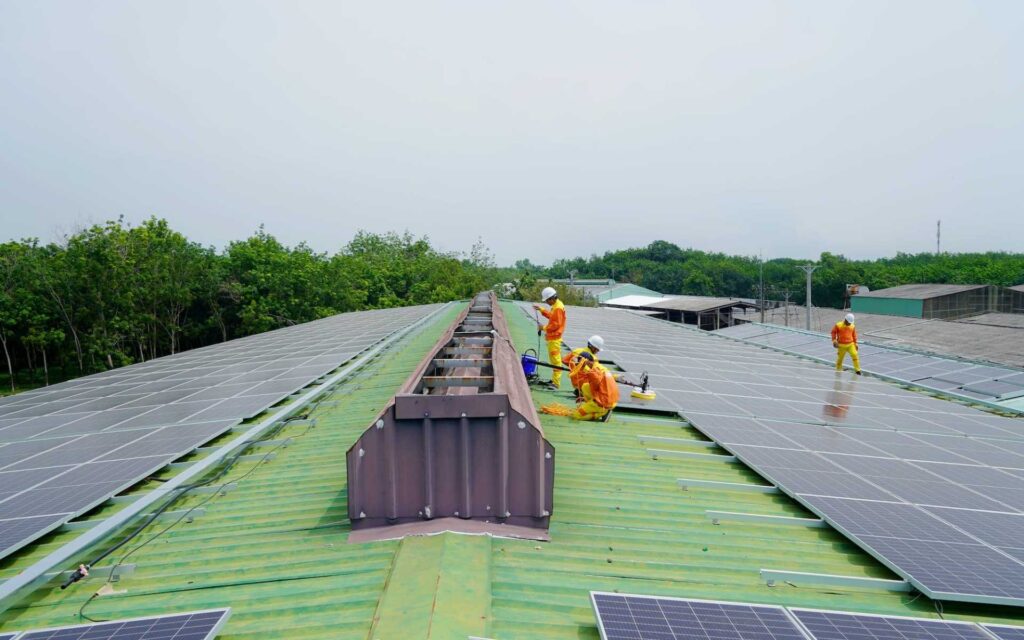
Inverter Failures
If the inverter displays an error or stops functioning, conduct a system reset as a preliminary troubleshooting measure. If the problem persists, consult your professional maintenance service.
Software Glitches
If experiencing irregular system behavior, ensure that the built-in microcontrollers have the latest firmware updates. Software glitches can often be resolved by simply updating the system’s internal software.
Conclusion
Both maintenance and troubleshooting are integral facets for the efficient and long-lasting operation of an all-in-one solar power system. At SolarCtrl , we not only provide state-of-the-art solar solutions but also invest heavily in after-sales support and technical guidance.
Contact us and get more information about the all-in-one solar power system now, let’s raise your business to the next level!
Understanding the Technology Behind All-In-One Solar Power Systems
All-in-one solar power systems are marvels of integrated engineering, offering a seamless blend of efficiency and sustainability. But what advanced technologies are at play under the hood? This article digs deeper into the sophisticated mechanisms that make these systems more than just a sum of their parts.

Advanced Photovoltaic Cells: From Quantum Dots to Bifacial Technology
Gone are the days when standard silicon cells dominated the solar industry. Today’s advanced photovoltaic cells employ innovations like quantum dots and bifacial technology. These developments allow for greater energy capture over more extended periods, even in suboptimal light conditions, effectively enhancing the overall efficiency of the solar system.
High-Efficiency Inverters: MPPT and Hybrid Systems
Modern inverters are far more intelligent than their predecessors. Many now use Maximum Power Point Tracking (MPPT) algorithms to continuously adjust to varying voltage levels, thus maximizing energy conversion. Hybrid systems even allow for the integration of alternative energy sources, making the entire system more robust and resilient.
Battery Technology: Lithium-ion and Beyond
Battery technology has also witnessed significant advances. While lead-acid batteries were once the norm, lithium-ion variants are now gaining traction for their higher energy density and longevity. Some systems are even exploring solid-state batteries, promising unprecedented levels of efficiency and safety.
Smart Controllers: IoT and Machine Learning
The smart controllers in contemporary all-in-one solar power systems often come with IoT (Internet of Things) capabilities. They can learn usage patterns and make predictive adjustments to optimize energy consumption. These systems can also be integrated with machine learning algorithms that adapt and improve over time, further enhancing operational efficiency.

Safety Features: Multi-Layered Protection Mechanisms
Today’s systems are designed with a multi-layered approach to safety. Apart from traditional circuit breakers and surge protectors, advanced features like fault detection and isolation (FDI) mechanisms and real-time system health monitoring offer an additional layer of protection.
Conclusion
The technology behind all-in-one solar power systems has evolved to include a spectrum of advanced features, from high-efficiency photovoltaic cells to intelligent controllers empowered by machine learning. As the technology continues to mature, these systems are becoming increasingly sophisticated, making them a compelling choice for those seeking an efficient, sustainable energy solution.
Understanding the Technology Behind All-In-One Solar Power Systems
All-in-one solar power systems are marvels of integrated engineering, offering a seamless blend of efficiency and sustainability. But what advanced technologies are at play under the hood? This article digs deeper into the sophisticated mechanisms that make these systems more than just a sum of their parts.

Advanced Photovoltaic Cells: From Quantum Dots to Bifacial Technology
Gone are the days when standard silicon cells dominated the solar industry. Today’s advanced photovoltaic cells employ innovations like quantum dots and bifacial technology. These developments allow for greater energy capture over more extended periods, even in suboptimal light conditions, effectively enhancing the overall efficiency of the solar system.
High-Efficiency Inverters: MPPT and Hybrid Systems
Modern inverters are far more intelligent than their predecessors. Many now use Maximum Power Point Tracking (MPPT) algorithms to continuously adjust to varying voltage levels, thus maximizing energy conversion. Hybrid systems even allow for the integration of alternative energy sources, making the entire system more robust and resilient.

Battery Technology: Lithium-ion and Beyond
Battery technology has also witnessed significant advances. While lead-acid batteries were once the norm, lithium-ion variants are now gaining traction for their higher energy density and longevity. Some systems are even exploring solid-state batteries, promising unprecedented levels of efficiency and safety.
Smart Controllers: IoT and Machine Learning
The smart controllers in contemporary all-in-one solar power systems often come with IoT (Internet of Things) capabilities. They can learn usage patterns and make predictive adjustments to optimize energy consumption. These systems can also be integrated with machine learning algorithms that adapt and improve over time, further enhancing operational efficiency.

Safety Features: Multi-Layered Protection Mechanisms
Today’s systems are designed with a multi-layered approach to safety. Apart from traditional circuit breakers and surge protectors, advanced features like fault detection and isolation (FDI) mechanisms and real-time system health monitoring offer an additional layer of protection.
Conclusion
The technology behind all-in-one solar power systems has evolved to include a spectrum of advanced features, from high-efficiency photovoltaic cells to intelligent controllers empowered by machine learning. As the technology continues to mature, these systems are becoming increasingly sophisticated, making them a compelling choice for those seeking an efficient, sustainable energy solution.
Cost Analysis of All-In-One Solar Power Systems: A Manufacturer's Perspective
The appeal of all-in-one solar power systems often extends beyond their efficiency and environmental benefits; cost-effectiveness is another crucial factor. This article aims to provide an in-depth cost analysis for anyone interested in the all-in-one solar power system.
Raw Material Costs: Silicon, Metals, and Polymers
One of the most significant expenses in manufacturing solar systems is the cost of raw materials. This includes high-grade silicon for photovoltaic cells, metals for frames and casing, and polymers for protective layers. Price volatility in these materials can significantly impact production costs.
Production Technology: Fabrication and Assembly
Advanced technologies like thin-film layering, laser cutting, and automated assembly lines are often required to manufacture high-efficiency solar panels and systems. The cost of this technology, including maintenance and updates, adds to the manufacturing overhead.


Labor: Skilled Workforce
A skilled workforce is crucial for specialized tasks such as quality control, machinery operation, and research and development. The costs related to labor, including salaries, benefits, and training, are another important factor in the overall production cost.
Research & Development: Innovation and Upgrades
For staying competitive, ongoing research and development are essential. While this incurs cost, it’s an investment towards creating more efficient and cost-effective systems in the long run.
Quality Control: Testing and Certification
Ensuring that all-in-one solar power systems meet industry standards and certifications requires rigorous quality control measures. This involves various tests, from performance evaluations to safety checks, which add to both time and cost.
Supply Chain: Logistics and Warehousing
The logistics of sourcing raw materials and delivering finished products also contribute to manufacturing costs. This includes warehousing, transportation, and inventory management, which need to be efficiently managed to keep costs low.

Conclusion
In the competitive landscape of solar energy, SolarCtrl diligently navigates through various cost factors—from raw materials and labor to quality control and logistics—to manufacture all-in-one solar power systems. Our focus on understanding and optimizing these cost components is not just a fiscal strategy but a commitment to delivering high-quality, competitively priced products.
As the industry continues to evolve, SolarCtrl remains steadfast in its pursuit of producing superior systems that meet the market’s demands while offering excellent value.
Cost Analysis of All-In-One Solar Power Systems: A Manufacturer's Perspective
The appeal of all-in-one solar power systems often extends beyond their efficiency and environmental benefits; cost-effectiveness is another crucial factor. This article aims to provide an in-depth cost analysis for anyone interested in the all-in-one solar power system.

Raw Material Costs: Silicon, Metals, and Polymers
One of the most significant expenses in manufacturing solar systems is the cost of raw materials. This includes high-grade silicon for photovoltaic cells, metals for frames and casing, and polymers for protective layers. Price volatility in these materials can significantly impact production costs.
Production Technology: Fabrication and Assembly
Advanced technologies like thin-film layering, laser cutting, and automated assembly lines are often required to manufacture high-efficiency solar panels and systems. The cost of this technology, including maintenance and updates, adds to the manufacturing overhead.

Labor: Skilled Workforce
A skilled workforce is crucial for specialized tasks such as quality control, machinery operation, and research and development. The costs related to labor, including salaries, benefits, and training, are another important factor in the overall production cost.
Research & Development: Innovation and Upgrades
For staying competitive, ongoing research and development are essential. While this incurs cost, it’s an investment towards creating more efficient and cost-effective systems in the long run.

Quality Control: Testing and Certification
Ensuring that all-in-one solar power systems meet industry standards and certifications requires rigorous quality control measures. This involves various tests, from performance evaluations to safety checks, which add to both time and cost.
Supply Chain: Logistics and Warehousing
The logistics of sourcing raw materials and delivering finished products also contribute to manufacturing costs. This includes warehousing, transportation, and inventory management, which need to be efficiently managed to keep costs low.
Conclusion
In the competitive landscape of solar energy, SolarCtrl diligently navigates through various cost factors—from raw materials and labor to quality control and logistics—to manufacture all-in-one solar power systems. Our focus on understanding and optimizing these cost components is not just a fiscal strategy but a commitment to delivering high-quality, competitively priced products.
As the industry continues to evolve, SolarCtrl remains steadfast in its pursuit of producing superior systems that meet the market’s demands while offering excellent value
Factors to Consider When Choosing a Supplier for All-In-One Solar Power Systems
The selection of a supplier for all-in-one solar power systems is a critical business decision that goes beyond just the price tag. It impacts your long-term operational efficiency, customer satisfaction, and ultimately, your profitability. This article aims to guide you through the essential factors to consider when making this pivotal choice.
Quality and Reliability of Products
Technical Expertise and Support
Customization Options
Compliance and Certifications
Lead Time and Flexibility
Conclusion
Choosing a supplier for all-in-one solar power systems is indeed a multi-dimensional task that involves evaluating several critical factors. At SolarCtrl , we understand how each of these elements can impact your business. Our commitment to delivering high-quality products, offering robust technical support, and ensuring fast and flexible delivery options aims to align seamlessly with your business objectives and customer satisfaction goals.
By considering a range of criteria like those outlined in this article, you’re better positioned to make a strategic decision, and we are confident that SolarCtrl stands up to rigorous scrutiny on all these fronts.
Factors to Consider When Choosing a Supplier for All-In-One Solar Power Systems
The selection of a supplier for all-in-one solar power systems is a critical business decision that goes beyond just the price tag. It impacts your long-term operational efficiency, customer satisfaction, and ultimately, your profitability. This article aims to guide you through the essential factors to consider when making this pivotal choice.
Quality and Reliability of Products
Technical Expertise and Support
Customization Options
Compliance and Certifications
Lead Time and Flexibility
Conclusion
Choosing a supplier for all-in-one solar power systems is indeed a multi-dimensional task that involves evaluating several critical factors. At SolarCtrl , we understand how each of these elements can impact your business. Our commitment to delivering high-quality products, offering robust technical support, and ensuring fast and flexible delivery options aims to align seamlessly with your business objectives and customer satisfaction goals.
By considering a range of criteria like those outlined in this article, you’re better positioned to make a strategic decision, and we are confident that SolarCtrl stands up to rigorous scrutiny on all these fronts.
Commonly Asked Questions
Yes, we provide samples and charge for the samples with freight cost. The sample fees will be returned if the order quantity over 200pcs.
We have streamlined our production processes to ensure that most of our products are readily available in stock. This means that you can purchase samples and have them shipped at any time and without delay.
Technical support hotline or email for customers to contact in case of technical issues with our products.
Onsite technical support to assist with the installation and maintenance of the products.
Online resources such as manuals, troubleshooting guides, and FAQs to help customers resolve common issues with the products.
Warranty or guarantee period to ensure that customers are covered in case of product defects or malfunctions.
Repair and replacement services for damaged or faulty products.
To provide local technical support, we offer a range of services to VIP distributors, including installation, usage guidance, maintenance, and other related support, free of charge. For larger projects with a capacity of over 55KW, if on-site technical support is required, the cost of airfare, lodging, and meals must be covered by the distributor.
Our technical support services include system design, installation, commissioning, repair, and maintenance. We aim to provide prompt and effective technical support to ensure the smooth operation of your equipment and systems.
To optimize our technical support services, we continuously update our knowledge and skills, and we invest in the latest tools and technologies to enhance our capabilities. In addition, we strive to maintain open communication channels with our clients to ensure that their needs and concerns are addressed promptly and effectively.
Machine appearance customization: Customers can choose the style and color of the machine according to their preferences.
Logo customization: Customers can have their own logo printed on the machine to increase brand recognition.
Label customization: Customers can customize the labels on the machine to include specific information or warnings.
LCD display customization: Customers can customize the information displayed on the LCD screen to meet their specific needs.
Packaging customization: Customers can customize the packaging of the machine to suit their requirements, including the design and materials used.
For orders of less than 10 units, we generally ship within two days. For orders between 10 and 100 units, we aim to ship within one week. To ensure the quality of our products, we keep sufficient inventory and perform a final round of testing before packaging and shipping.
Please note that the delivery time may vary depending on factors such as the destination, shipping method, and customs clearance processes. We work with reliable shipping partners to ensure timely delivery and provide tracking information for all shipments.
We usually ship by DHL, UPS, FedEx, or TNT. Bulk orders can be shipped by airline or sea shipping as well. It is important to note that the choice of shipping method may depend on factors such as the size and weight of the shipment, the destination, and the urgency of the delivery.
We offer several payment methods for your convenience, including T/T, L/C, Western Union, PayPal, and cash. Please choose the payment method that works best for you.
Commonly Asked Questions
Yes, we provide samples and charge for the samples with freight cost. The sample fees will be returned if the order quantity over 200pcs.
We have streamlined our production processes to ensure that most of our products are readily available in stock. This means that you can purchase samples and have them shipped at any time and without delay.
Technical support hotline or email for customers to contact in case of technical issues with our products.
Onsite technical support to assist with the installation and maintenance of the products.
Online resources such as manuals, troubleshooting guides, and FAQs to help customers resolve common issues with the products.
Warranty or guarantee period to ensure that customers are covered in case of product defects or malfunctions.
Repair and replacement services for damaged or faulty products.
To provide local technical support, we offer a range of services to VIP distributors, including installation, usage guidance, maintenance, and other related support, free of charge. For larger projects with a capacity of over 55KW, if on-site technical support is required, the cost of airfare, lodging, and meals must be covered by the distributor.
Our technical support services include system design, installation, commissioning, repair, and maintenance. We aim to provide prompt and effective technical support to ensure the smooth operation of your equipment and systems.
To optimize our technical support services, we continuously update our knowledge and skills, and we invest in the latest tools and technologies to enhance our capabilities. In addition, we strive to maintain open communication channels with our clients to ensure that their needs and concerns are addressed promptly and effectively.
Machine appearance customization: Customers can choose the style and color of the machine according to their preferences.
Logo customization: Customers can have their own logo printed on the machine to increase brand recognition.
Label customization: Customers can customize the labels on the machine to include specific information or warnings.
LCD display customization: Customers can customize the information displayed on the LCD screen to meet their specific needs.
Packaging customization: Customers can customize the packaging of the machine to suit their requirements, including the design and materials used.
For orders of less than 10 units, we generally ship within two days. For orders between 10 and 100 units, we aim to ship within one week. To ensure the quality of our products, we keep sufficient inventory and perform a final round of testing before packaging and shipping.
Please note that the delivery time may vary depending on factors such as the destination, shipping method, and customs clearance processes. We work with reliable shipping partners to ensure timely delivery and provide tracking information for all shipments.
We usually ship by DHL, UPS, FedEx, or TNT. Bulk orders can be shipped by airline or sea shipping as well. It is important to note that the choice of shipping method may depend on factors such as the size and weight of the shipment, the destination, and the urgency of the delivery.
We offer several payment methods for your convenience, including T/T, L/C, Western Union, PayPal, and cash. Please choose the payment method that works best for you.
Your Trusted Source For
Let's raise your business to the next level, NOW! →
Start with following 4 steps:
1
Tell Us What You Need
Tell us as specific as possible of your needs, let us fully understand what you want.
2
Get Solution & Quote
We will work on the best solution according to your requirements, the specific quote will be provided within 24 hours.
3
Approve for Sample Order
Upon receiving your sample order and deposit, we will arrange for sample testing and shipment.
4
Approve for Mass Production
We will start mass production and handle the shipment after getting your approval and deposit.

Get A Free Quote!
- We will contact you within 24 hours
*All your information will be kept strictly confidential and our business staff will ensure that your private information is absolutely safe!
Your Trusted Source For
Let's raise your business to the next level, NOW! →
Start with following 4 steps:
1
Tell Us What You Need
Tell us as specific as possible of your needs, let us fully understand what you want.
2
Get Solution & Quote
We will work on the best solution according to your requirements, the specific quote will be provided within 24 hours.
3
Approve for Sample Order
Upon receiving your sample order and deposit, we will arrange for sample testing and shipment.
4
Approve for Mass Production
We will start mass production and handle the shipment after getting your approval and deposit.
Get A Free Quote!
- We will contact you within 24 hours
*All your information will be kept strictly confidential and our business staff will ensure that your private information is absolutely safe!
More Related Solar Products

High Frequency Inverter
SolarCtrl High Frequency Inverter offers a wide PV input voltage range, making it adaptable to various solar setups. Designed to thrive even in challenging environments with an anti-dusk kit.
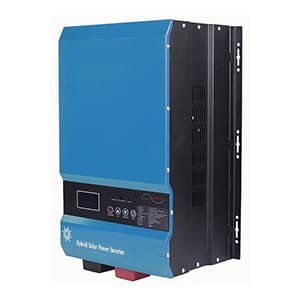
Low Frequency Inverter
With a versatile pure sine wave output ranging from 1kW to 12kW, SolarCtrl Low Frequency Inverter can adapt to various power needs, and handle 3 times peak power effortlessly with its robust load capacity, which is perfect for inductive loads like motors, pumps, and air conditioners.

Solar Pump Inverter
SolarCtrl Solar Pump Inverter is efficient which get 5%-10% higher than orther inverter which need programming. 30% more water output with advanced inverter control algorithm and Maximum PowerPoint tracking efficiency reach 99% with advanced MPPT algorithm.
More Related Solar Products

High Frequency Inverter
SolarCtrl High Frequency Inverter offers a wide PV input voltage range, making it adaptable to various solar setups. Designed to thrive even in challenging environments with an anti-dusk kit.

Low Frequency Inverter
With a versatile pure sine wave output ranging from 1kW to 12kW, SolarCtrl Low Frequency Inverter can adapt to various power needs, and handle 3 times peak power effortlessly with its robust load capacity, which is perfect for inductive loads like motors, pumps, and air conditioners.

Solar Pump Inverter
SolarCtrl Solar Pump Inverter is efficient which get 5%-10% higher than orther inverter which need programming. 30% more water output with advanced inverter control algorithm and Maximum PowerPoint tracking efficiency reach 99% with advanced MPPT algorithm.
More Related Solar Energy Professional Articles
Why Is My Solar Charge Controller Cutting Off Power at Night?
Solar charge controllers play a vital role in regulating the power generated by solar panels and ensuring that your battery system operates efficiently and safely. However, many users experience a frustrating issue where their solar charge controller cuts off power at night, leaving them without power during critical hours. Understanding the reasons for this behavior is essential to maintaining a well-functioning solar system.
How to Set Up the Inverter of a Solar System?
Setting up the inverter of a solar system is a critical step in ensuring your system runs smoothly and efficiently. Whether you’re installing a solar system for your home, business, or a larger-scale project, the inverter plays a key role in converting the direct current (DC) from your solar panels into usable alternating current (AC) for your appliances. In this guide, we’ll walk you through the essential steps for setting up your solar inverter, providing practical tips along the way.
How to Maximize the Efficiency of Solar Panels?
Solar panels are an excellent investment in renewable energy, offering both environmental benefits and long-term cost savings. However, to truly get the most out of your solar power system, it’s important to maximize its efficiency. Even small adjustments can significantly improve your solar panels’ performance, helping you generate more power and save more money.
Why Are Most Commercial Solar Panels Only 25% Efficient?
Commercial solar panels have revolutionized how we generate clean energy, but despite the progress, most panels still hover around 25% efficiency. Given the rapid pace of technological advancements in other areas, why is solar energy conversion still relatively low? In this article, we’ll explore the factors that limit solar panel efficiency, the science behind these limitations, and what future advancements could bring.
More Related Solar Energy Professional Articles

What Are Solar Panel Mounting Rails and Racks?
Solar energy has become a cornerstone of renewable energy solutions worldwide. A critical component of any solar installation is the mounting system, which includes mounting rails and racks. Understanding their roles and importance ensures that solar panels are securely installed and optimally positioned for maximum energy generation.
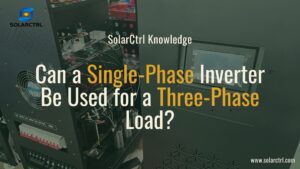
Can a Single-Phase Inverter Be Used for a Three-Phase Load?
When considering solar energy solutions, one common question arises: can a single-phase inverter be used for a three-phase load? Understanding the compatibility and implications of using a single-phase inverter in a three-phase system is crucial for homeowners, solar energy enthusiasts, and professionals in the field.

Does a hybrid solar inverter have an inbuilt charger?
Are you considering investing in solar energy for your home or business? One common question that arises is whether a hybrid solar inverter includes an inbuilt charger. Understanding the components and functionality of a hybrid solar inverter can significantly impact your decision-making process and help you make the most efficient and cost-effective choice for your energy needs.
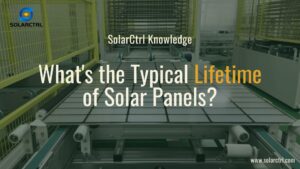
What’s the Typical Lifetime of Solar Panels?
When you invest in solar panels, you’re setting up for decades of renewable energy. But exactly how long can you expect your solar panels to function efficiently? This is crucial as it impacts the return on investment and your overall energy strategy.
Solar Energy Specialist
We are experts in solar energy industry. If you think you have a problem with it call us for a free, no-obligation, quote.
